Adventurous Kate contains affiliate links. If you make a purchase through these links, I will earn a commission at no extra cost to you. Thanks!
Hi, Amazon. We’ve had a long history, ever since I ordered those first books and DVDs to be delivered to my college mailbox. You indulged my whims, from paleo cooking to crocheting, and you deposited a solid amount of cash in my bank account at the end of every month. Not to mention that fat bonus in February for December commissions.
You were the everything store. And everything I needed, you had it.
I turned to you first, Amazon, for anything I needed to buy for myself.
I turned to you first, Amazon, for anything I wanted to sell to my readers.
But honestly, after the events of this week — hell, the events of the past month — I don’t see how we can have a future together.
You and I are through. I don’t care if it’s a pandemic.
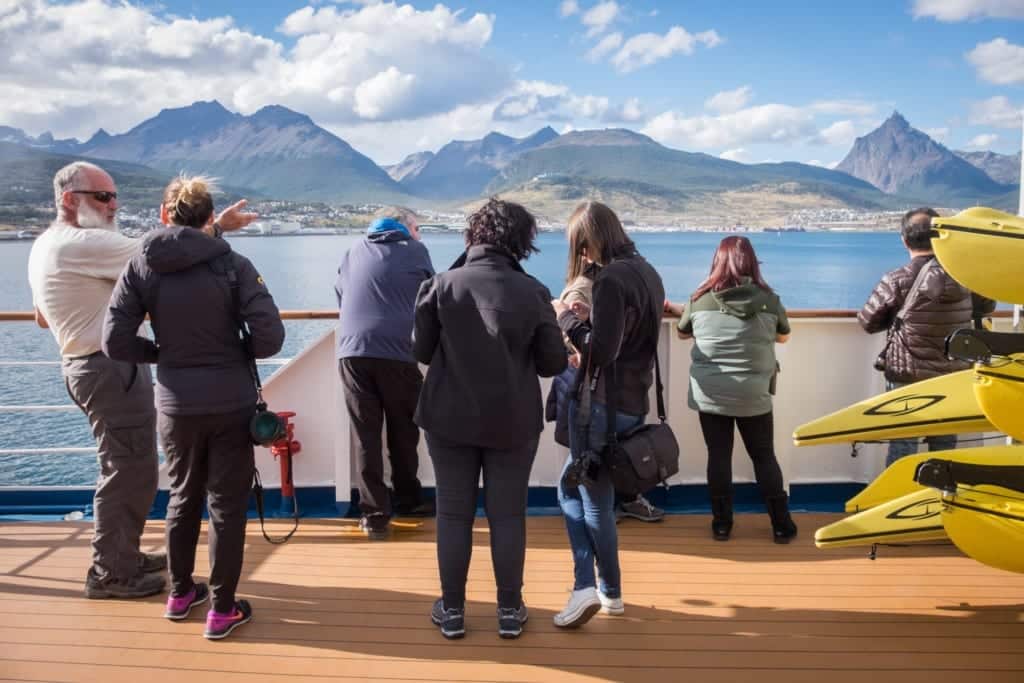
Amazon reduces affiliate program commissions
On Tuesday, April 14, members of the Amazon Associates program received an email saying that their affiliate program had changed. Right away, I had a pit in my stomach. Companies don’t send an email like that to share good news.
Yes, it turned out Amazon’s commission rates were changing. We were sent a link to a page with the new commissions listed:
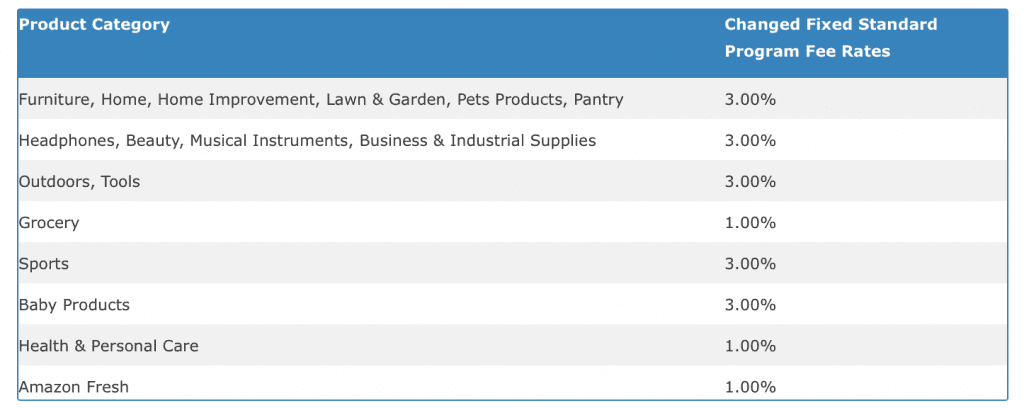
Of COURSE that page didn’t have the old commissions listed. Here are the actual numbers:
- Furniture, Home, Home Improvement, Lawn & Garden, Pets Products, Pantry: 8% to 3% (60% drop)
- Headphones, Beauty, Musical Instruments, Business & Industrial Supplies: 6% to 3% (50% drop)
- Outdoors, Tools: 5.5% to 3% (45% drop)
- Grocery: 5% to 1% (80% drop)
- Sports: 4.5% to 3% (33% drop)
- Baby Products: 4.5% to 3% (33% drop)
- Health & Personal Care: 4.5% to 1% (78% drop)
- Amazon Fresh: 3% to 1% (67% drop)
Since COVID-19 hit, travel bloggers have seen a lot of bad news for affiliate programs. Some reduced the products that earned commissions; some, like HotelsCombined and Momondo, told us that we could keep sending them traffic, but they weren’t going to pay us anything for it.
I make around 30-40% of my income from affiliate marketing. Some people make upwards of 90%.
I can understand why travel affiliate programs are suffering. Nobody is booking travel right now. Hell, hardly anyone is even researching travel right now. It’s why we’ve all lost our incomes.
But Amazon? Amazon has never been better.
The day we received those emails, Amazon’s stock hit an all-time high of $2,283.32 per share.
The day we received those emails, Jeff Bezos’s wealth increased by $6.5 billion.
The day we received those emails, Amazon announced that they were hiring 75,000 people after hiring an additional 100,000 last month.
Amazon has been profiting enormously from people staying home and shifting their purchases online. Even more so when you factor in new Prime memberships and low gas prices for delivery vehicles.
Amazon is not a desperate company on the verge of losing everything. They’re raking it in.

Why use Amazon’s affiliates, anyway?
Since I started my blog, I’ve been using Amazon affiliate program to earn commissions on products I recommend. Almost every travel blogger does; Amazon is a staple for bloggers of all niches.
Amazon’s affiliate commissions are much lower than direct programs — this is true. But Amazon usually has the lowest prices, and everyone shops from there. You’re likelier to drive a commission on a site people use regularly.
Additionally, with Amazon’s affiliate program, you can earn commissions in several countries, and you can get commissions on whatever people buy, even if they don’t buy on the product in your affiliate link.
So while I earn the bulk of my commissions on travel gear and books, I’ve also earned from purchases on everything from diamond rings to dildos, and quite a bit of dog food.
A lot of travel bloggers I know concentrate hard on Amazon affiliates. I know a few travel sites that specialize in packing lists and earn the bulk of their income from Amazon.
And several travel bloggers have one or two posts that rank very well in search engines for the best drybags or biodegradable sunscreen or travel underwear (just random examples), and thus earn a lot of traffic and Amazon commissions.
And honestly, travel is not one of the more obvious niches for retail sales. If you’re a food blogger who sells a lot of fancy blenders or a tech blogger who sells a lot of high-priced noise-canceling headphones, you can make serious bank.
I’ve never done quite THAT well — I usually earn a few hundred bucks a month, plus a lot more in December for the holidays. Less than you’d think from a site this size. But it was always there, and reliably so.
Imagine a blogger who was earning a comfortable $1200 per month through Amazon affiliates and used that to pay her $1000 rent or mortgage. (Let’s forget about taxes for the moment.) Because of this, assuming that nothing changes on what she sells (oh, and it will, but let’s forget about the economy for a second), her payment is suddenly reduced to, say, $550. With no change to the business she’s bringing. During the worst economic disaster of our lifetime.
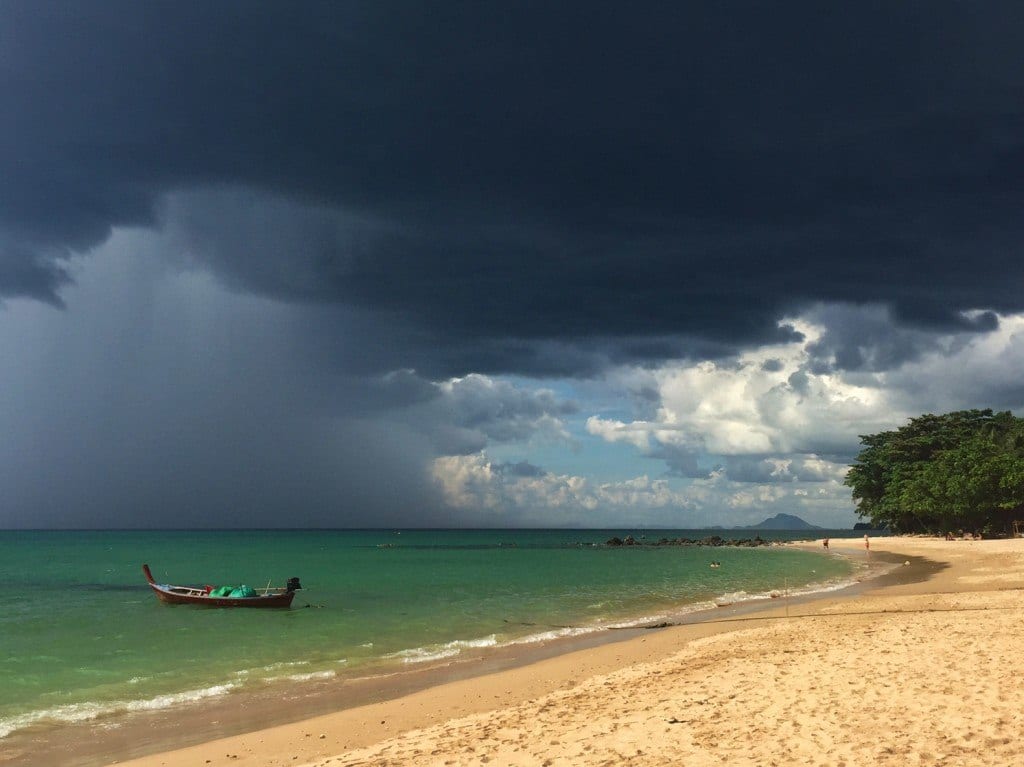
This is what Amazon does.
This isn’t the first time Amazon has reduced our affiliate commissions. They last slashed rates a few years ago. But this is simply how they operate as a business.
For a long time, Amazon was bewildering — it was huge and influential, but didn’t look like it was going to turn a profit. Amazon didn’t turn a profit until 2003 — nine years after being founded and seven years after going public.
Amazon’s business method from the beginning was to operate without turning a profit, promising investors that it was a long game. It paid off. They spent several years slicing prices down and systematically eliminating their competition. Dominate, eliminate, expand. Dominate, eliminate, expand.
And over the years, we grew accustomed to buying from Amazon. We got used to the low prices; we got addicted to free two-day Prime shipping.
As affiliates, we got used to linking to Amazon whenever possible. They had everything.
And that made it easy to excuse what came next.
Amazon has grown to the point of arguably being a monopoly in many respects, making it too hard for other businesses to compete.
While it’s not the sole factor, Amazon played a big role in the destruction of brick-and-mortar businesses. Not just small mom-and-pop businesses, but large businesses like department stores, too.
Amazon regularly sells counterfeit products, and the system makes it difficult to stop these unauthorized resellers. Amazon’s counterfeit beauty products can be dangerous to people’s health.
When Amazon brought their employees up to a $15 minimum wage, they cut employee benefits.
But let’s not forget about the poor working conditions in their warehouses. The poor working conditions for their drivers. And even though they’re the most privileged ones in the company, the working conditions in Amazon’s Seattle office are a different brand of hell.
Speaking of Seattle, Amazon has changed the city, and not for the better. New York almost had to pay Amazon billions of dollars in tax incentives — and AOC called their bluff.
Oh, and they pay a shockingly low amount in taxes.
I could go on and on and on. I recommend going down the Amazon rabbit hole if you have the time.
Who in their right mind actually respects a company that does all that?!
All this time, I thought I was working hard to sustain myself. In fact, most of my efforts went toward making Amazon richer.
Here’s the truth: Amazon has been engaged in bad activity for a long time, I knew it, and I didn’t have the fortitude to quit.
That’s on me, and I take full responsibility.
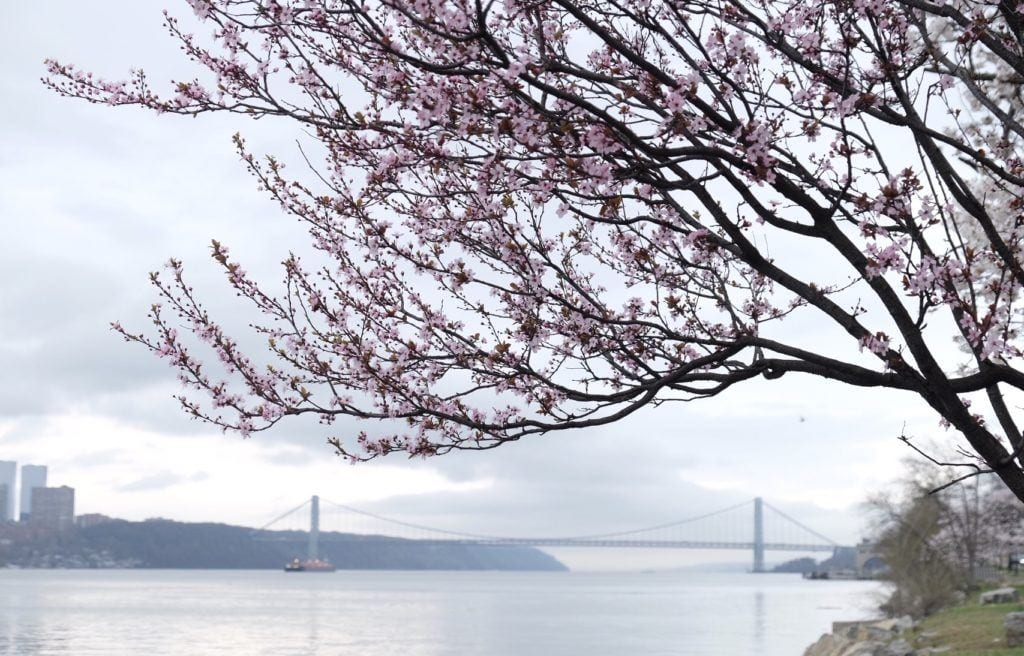
“But Amazon’s a business! They have the right to do this!”
Yeah. And I have the right to call them an asshole.
At one point, I was at B&H Photo in New York, buying some camera gear the day before a trip, feeling incredibly guilty. I was only buying a UV filter, a memory card, and some spare batteries, but if I hadn’t waited until the last minute, I could have gotten them for cheaper from Amazon.
That’s fucked up. I was standing in line in a New York institution! A midtown icon that stands the test of time as small businesses get replaced by chain banks and drugstores! A business that lives so in line with its Orthodox Jewish values that they don’t even process online orders on the Sabbath.
B&H is exactly the kind of company we should be supporting.
What kind of person did Amazon turn me into?!
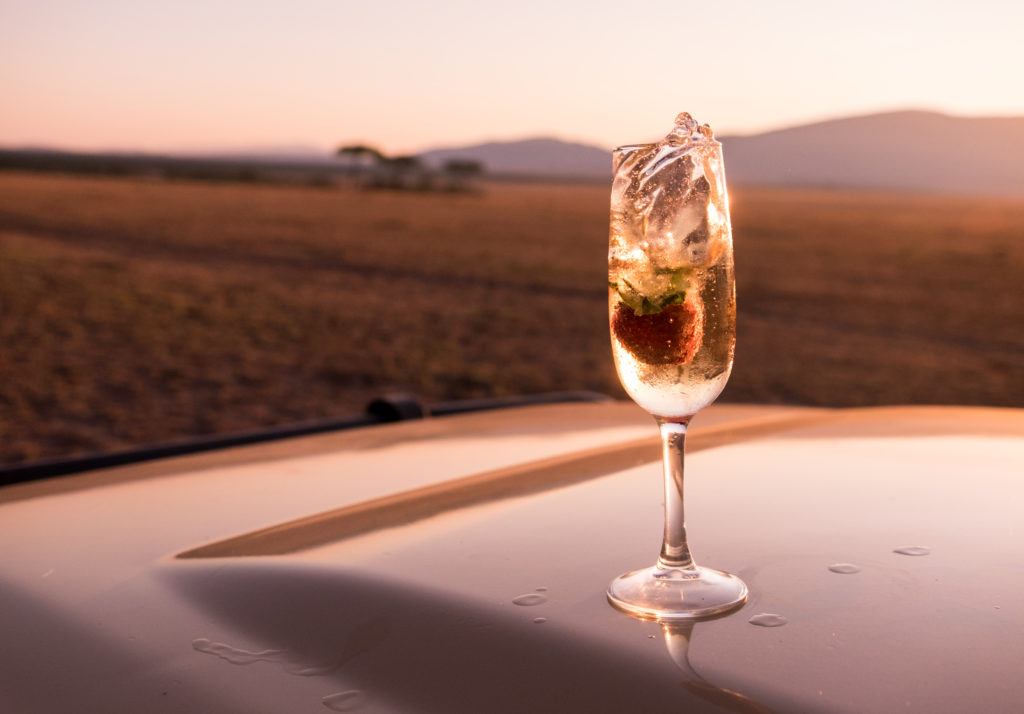
A New Way of Doing Business
This pandemic has been a disaster for so many people’s livelihoods. The travel industry has been hit particularly hard, and I wouldn’t wish this distress on anyone. But I’m trying to find the silver linings where I can — and one is that I’m reevaluating the kind of business I want to run.
One key question I’ve asked myself: Would you still do this if you didn’t make any money doing it?
Well, I wouldn’t be working my ass off to make Jeff Bezos richer, that’s for sure. In fact, I’ve realized that I would love to reduce my reliance on affiliate marketing for middleman-type businesses, and focus more on supporting small businesses I care about.
More than anything, this pandemic has made clear that I need to concentrate on earning from products I create for my readers. I’ve built an audience of kind, smart, loyal readers over the past 10 years. I always felt guilty about asking them to buy something directly from me — but I shouldn’t have.
Which is why I started the Adventurous Kate Patreon. This way I get paid directly from my readers, starting at $6 per month, to create exclusive, fun, ad-free content they LOVE. 136 people have signed up so far, which is now earning me more than what I was making with Amazon. Go figure.

How to Go About Dropping Amazon
I never would have dreamed of dropping Amazon before now. I thought I needed their money. Even after my income was reduced, I kept feeling in the back of my head that somehow, someday I would write an affiliate-drenched post that hit the SEO jackpot and earned me 1500 bucks a month.
Like too many Americans who see themselves as “temporarily embarrassed millionaires,” I was banking on possibility rather than reality, which is that Amazon is going to be slashing down our commissions until they get rid of the affiliate program altogether.
So, what now? I have thousands upon thousands of Amazon affiliate links all over the site. Removing them is going to be a long-term process, and part of that will be looking to replace the links with other affiliate programs.
One I’m definitely going to be doing is Pacsafe’s direct program, which they will be launching later this month. The #1 item I sell through Amazon is the Pacsafe Travelsafe, a portable safe that I consider the most important thing I pack. (When I led a tour in Central America back in 2015, I nearly cried when I saw that three of the girls had bought that safe because of me!)
I live and breathe Pacsafe products, and I told them that I intend to be one of their top affiliates. They will be paying out 15% on full-priced items — a lot more than Amazon. So how much does that work out to?
The 5-liter Travelsafe retails for $69 on Amazon and $79 on the Pacsafe site. I would earn a $2 commission from Amazon and an $12 commission from Pacsafe. Even if people are 50% less likely to buy from Pacsafe than Amazon, with no supplementary dog food purchases, that still earns me a significantly higher commission.
Huh. That’s something.
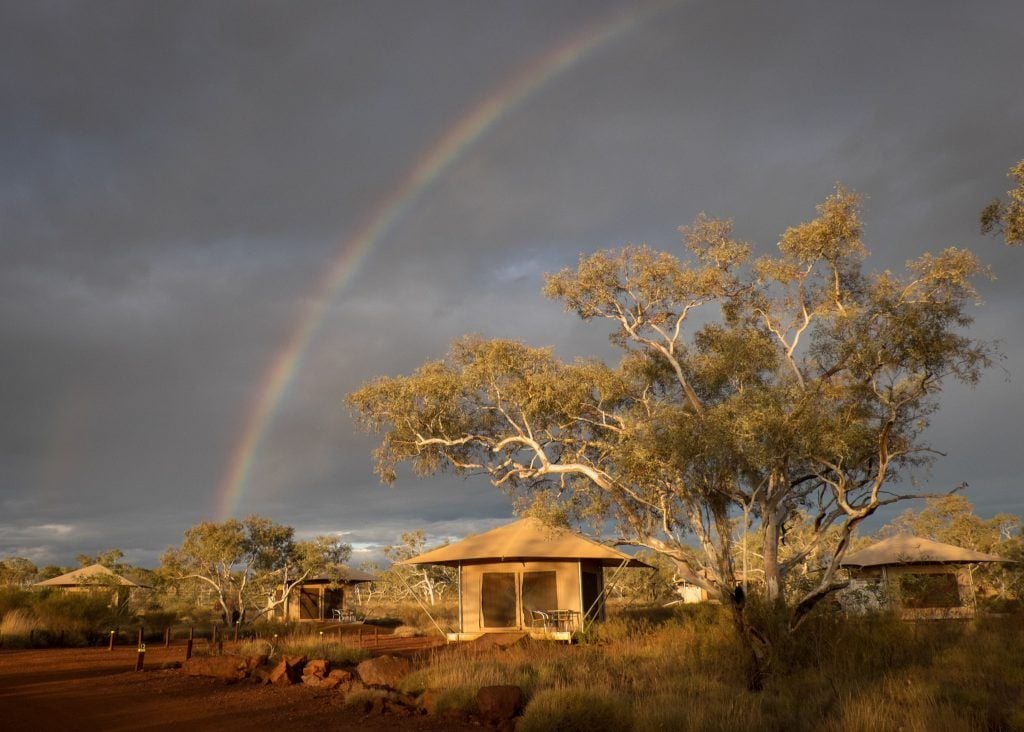
Can I give up Amazon altogether?
As much as I’d like to stop supporting Amazon financially, I know how difficult that is. Amazon powers an astonishingly high percentage of websites through Amazon Web Services. Honestly, if you work on the web, if you even use the web, you’re not avoiding any of that. And if I ever publish a book (which I’d love to do), you can’t do that without Amazon.
For Adventurous Merch, the t-shirts that Cailin and I sell, we’re going to need to find a new vendor.
But as a consumer, I can stop going to Amazon first. I can buy the vast majority of stuff I need at drugstores, electronics stores, independent bookstores. I might not get free two-day delivery, but I can wait! Or pay! Or buy in person!
Movies? I can rent them via iTunes or YouTube. (Neither Apple nor Google are squeaky-clean — what tech giant is? — but I’d rather put money in their pockets than Amazon’s.)
As for shows? Fleabag, on Amazon Prime, is one of the most remarkable shows I’ve seen in the past decade. It made my heart sing. And yet…it’s finished. So there’s that.
And then there’s Whole Foods. Well, I don’t shop there often. If it were Trader Joe’s, that would be a lot harder.
I subscribe to the Washington Post. Which is essential journalism, and which Bezos owns. I’m keeping it.
I canceled my Prime in January, and I was thrilled to find out that even though I paid in one annual payment, I was refunded a prorated difference. I hadn’t expected to get that money back. So if you’re letting that hold you back from quitting Prime, don’t!
The hardest part is ebooks and my Kindle. I love my Kindle Paperwhite, but she’s an old girl (purchased at a Tokyo camera shop in 2013) and she’s feeling the creaks of age, from screen cracks to slow speeds. I’ve been on the verge of buying a new Kindle for years. Maybe I should take a look at other e-readers.
But you don’t have to go cold turkey to make a big difference. Giving up meat one day per week makes a positive impact on the environment. Giving up booze every day but the holidays saves you a ton of hangovers. You can make a similar impact with your purchasing power.
For me, I think reducing my Amazon spending by 95% is a realistic goal.
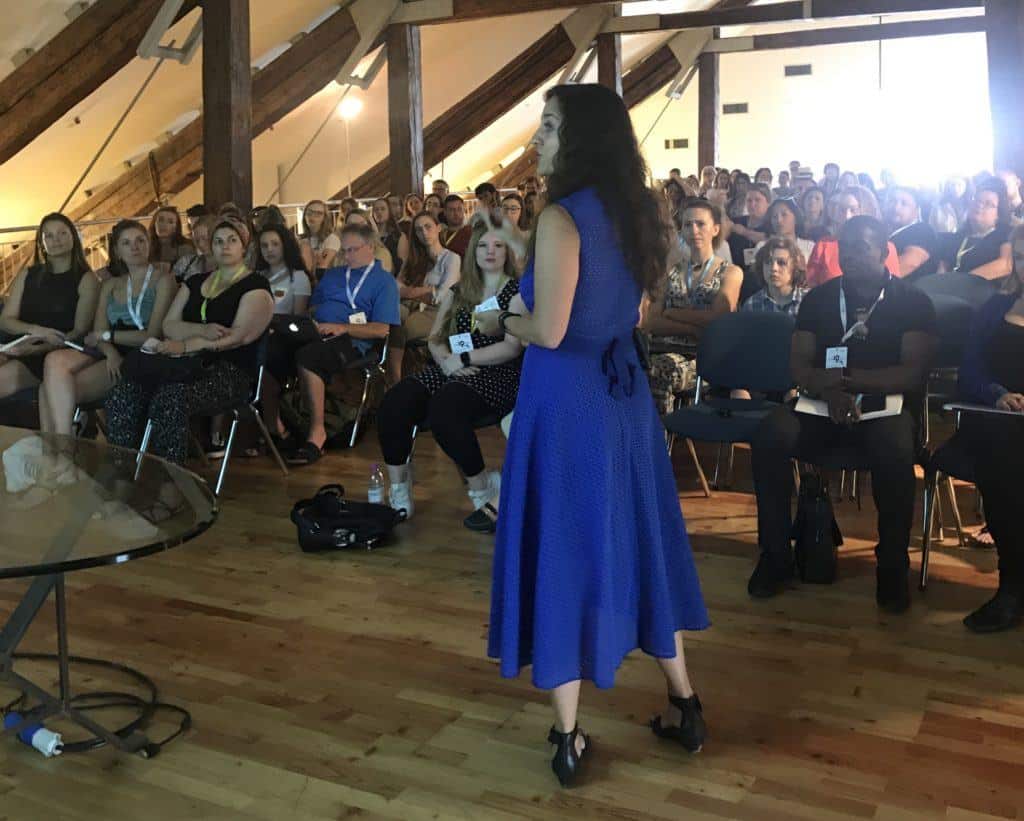
Advice for Members of Amazon’s Affiliates Program
Since the pandemic began, I’ve been doing a lot of blog consulting. Part of this has been teaching bloggers how to make a steady living at a very uncertain time, and affiliate marketing is a huge part of that.
Whatever you do is up to you. Keep your Amazon links or get rid of them. Start searching out new companies or stick with Amazon. However, if I were advising content creators on what they should do next, here’s what I would recommend:
Don’t waste your time signing petitions to Jeff Bezos, asking to reinstate the previous commission rates. He doesn’t care. He’s never cared. The commissions aren’t coming back.
Start researching alternative affiliate programs. Particularly from brands you already sell. Compare the difference between direct programs with the brand (they often pay more) and affiliate aggregates like RewardStyle and Commission Junction (you may get paid faster as several programs will help you hit the payment threshold).
Run A/B tests. Take some of your perennially popular affiliate-driven posts and experiment for a month with the links pointing to a non-Amazon retailer. Compare sales and commissions. The results may surprise you.
Don’t publish new Amazon-driven content. If your plan for the next few months was to create a new “the best _____” post stuffed with Amazon links, use your time and energy toward another moneymaking post.
Understand that Amazon’s affiliate program will likely be disappearing completely at some point. It’s only a matter of time. Don’t stake your income on something that’s on its last wheezing legs.
This post is so so soooo good and really speaks to me on both a personal and a business level. You voiced many thoughts I have been having lately. For the past couple of weeks I have made a conscious effort to avoid buying from Amazon and have thought about it a lot to reduce my affiliates with them. Since my blog is not huge it seems like now is the right time to find alternative sources and your post has given me just the kick needed to do it – thank you!
Kate, this is awesome. You’re so right that we have all become addicted to Amazon’s low prices and quick deliveries while knowing that their ethics are abysmal. So cool to see you finding other ways to spend and make money!
I don’t know what I would do without kindle books, but I do not have a kindle. I added the app to my computer, phone and ipad. I read so much (about 200 books a year) and could not afford to do that by buying physical books, so I get the majority of my books from the library. Overdrive and libby use almost all kindle books (a few epub ones) so I’d have to be kindle compatible, but I do rest a little easier knowing that at least monetarily wise they did not get the money from my tablet purchase!
I just use Libby to borrow books from the library onto my kindle.
Same here! I’ve never had a kindle. I just use the app on my iPad and I also read roughly 200 books per year. The only thing I don’t like about the kindle app is you can’t permanently delete books from your account. You can only do that when you’re on their site.
I’ve been shifting away from using Amazon this year as I’ve just grown sick of how terribly they treat everyone. I’ll admit I’ve bought a few things from their this year (pretty much all related to a need for more scrubs or things for my residents) but have stopped going there for smaller personal items. Once my Prime membership officially expires I won’t be renewing. In so many aspects of my life I work to support small companies that pay workers a living wage, treat workers fairly, aren’t strong-arming their supplies. I finally have to accept that shopping at Amazon is not in line with my values as a human being. As you can see from above it is not an easy breakup but I am making progress.
I fully agree with buying direct from manufacturers or small businesses even if it costs a little more, but trashing Amazon because they stopped paying for your links seems shitty and unproductive.
I don’t think it’s unproductive at all – it’s not just Kate who’s been impacted – she speaks for hundreds of thousands of bloggers. Even big sites like Wirecutter and Buzzfeed will be hurt, as a big portion of their earnings are from affiliate income, and this will impact their employees’ livelihoods. People should be aware of the harm Amazon has caused and continues to cause (beyond this one decision, and Kate does a great job of laying out Amazon’s impact).
This was such a great post. I love your realistic take on all of this. There’s definitely a lot of cognitive dissonance going on with me when I use Amazon. I’ve been a Prime subscriber for years and I’ve relied on Amazon for a lot but I also know their business practices are horrible. I think it’s great that you talk about cutting down your Amazon use without giving it up entirely. There are a few things I know that will be harder to give up than others (The Marvelous Mrs. Maisel comes to mind!) but I know I can start cutting back om some things now. What’s interesting is I’ve actually used Amazon so much less than I typically do since quarantining started- my consumption in general has just gone down less, which is one silver lining to come out of all of this. You’ve definitely inspired me to think twice before I purchase something from Amazon in the future and I hope others can say the same- that in itself is a great start!
WORD, sister.
I’m also boycotting Amazon as a consumer (which isn’t easy to do, when they’re so damn convenient and often well-priced), and I am beginning the long and arduous process of finding other affiliate providers and eliminating my Amazon links. Actually, I started this process when they cut commissions on luggage – which is one of my biggest earners.
I see red when I consider how unethical this move is on Amazon’s part. And as if to rub salt in the wound, they’ve also cut their participation in all rebate and cashback programs in Canada (don’t know if they’ve done the same in the States). So they’ve not only screwed affiliates, they’re screwing consumers too.
Well done, Bezos. Jerk.
Hi Kate – Interesting read as usual! In your post you reference B & H Photo. Have you read about their business model? There were a number of articles written on the subject 10 – 15 years ago. Pretty fascinating. I live in NJ, so when I look to buy camera equipment, I go into NYC to try out the equipment (B & H, Adorama etc.). I use Amazon for many things as well. If you have issue with Amazon’s business practices, you may also take issue with some of the ones used by the NYC photo shops. Either way, a pretty fascinating read as to how the business operates!
Kate, you’re the best! This is just the push I needed to re-delete my account. Went a year without it but I caved after I moved and “needed” to buy a million things. Convenience isn’t worth supporting a shitty company. Thank you for writing this post! Would love to see others on how to best support small businesses.
Thanks for writing this Kate. I’m sorry about the negative comments, as I think this post is really necessary and helpful for creators. I’ve always felt iffy about using Amazon links and always list a direct alternative, but have never gotten any bites on them since I’m a smaller blog. I’ve personally tried to order less and less from them though, and I’ve only made one order in 2020. Thanks for sharing your advice and what you’re planning to do to try to reduce use of Amazon and the companies it owns.
For ereaders, you could look into Kobo.
They don’t have much of the USA market, but they are more known internationally and are (still) headquartered in Toronto, and are owned by Rakuten.
I think they also have an affiliate program, but not sure if it’s only earned on ebooks/audiobooks or their ereaders, too. With your social media + blog following, maybe try reaching out to them for a review unit or influencer discount, if there’s such a thing? Kobo Libra is the newest model released in 2019.
There’s on-device library integration on the current Kobo ereaders if your library uses Overdrive (check the EPUB format availability at your library’s Overdrive site). Your reading tastes seem to be mostly published by the big 4, not self-published, so book selection is basically the same if you buy from their store.
MobileRead forums are a good place to read/research.
Feel free to contact me if you have questions (Kobo owner).
Kudos to you, Kate. I’ve encountered quite a similar trajectory with stock photography and am SO fed up with the greed of these companies. I’ve witnessed the royalties decrease and decrease over the past decade to the point that you end up making literally pennies off images you worked so hard to produce and edit. I’m happy you found an alternative that has more than compensated for your loss of income, now I need to do the same with stock photography and find a company that actually values what we do and isn’t so damn greedy.
Love this. Kobo is a great alternative to Kindle! You can support local bookstores with your ebook purchases. Also, Bookshop.org is a fairly new site that supports indie bookstores with online purchases of physical books, and they’ll be rolling out ebook and audiobook purchases in the new future. For now, I love Libro.fm for audiobooks; your purchases support indie stores there, too.
Great post. A lot of people feel that Amazon has let them down, including me.
I’ve had two Kindles bite the dust, and now I have a better device for reading.
A company I work with has a new affiliate program—I’m building it, so expect
to hear more when it goes live! Verily, it will pay better than Amazon.
I think this is super interesting. I feel a little guilty for my amazon purchases as well. I have stopped purchasing books and kindle books because I’ve gotten back into using my public library. I feel good about that. I was looking into Amazon affiliates for when my baby blog grows up a little bit, but now I’ll definitely rethink that decision. I know how many companies Amazon has made go out of business and that hurts to think about. I think quitting Amazon will allow people, myself included, to stop spending too much money on unnecessary products. Not only will this save people money, but it will also help our environment. I love your point of view. Thanks for sharing! 🙂
Yes!! Thank you. Amazon has become the big bad corporate bully of our time. Everything you said is true. I hate that we have become so dependent on them. I hate that so many of us are now so fully accustomed to receiving individual household items through the mail on demand that we fail to see, for instance, the excessive carbon footprint. Amazon has also fired its workers who are organizing around climate change and around working conditions for warehouse workers. Bad news all around.
Thanks so much for this Kate. I only started putting affiliates on my site about 6 months ago and never felt right about having Amazon affiliates because of – well you know, all the bad things they do. It was really disheartening to see most bloggers didn’t seem to care about that though, and have their sites jammed with Amazon affiliates. I have a lot of respect for you for putting your foot down – I hope that more will follow, because F#ck Amazon
Honestly, it’s hard to say no because people buy from Amazon and they sell everything. It’s about as sure a thing as you can get, even with their low commission rates.
Like many other things, we don’t start to think about a wrong until it hits us. This is not to blame you Kate as I know freelancing in travel industry is not easy.
I stopped buying books altogether from amazon 2 years ago and I don’t know where my last purchase was. I bought my camera from a local store and paid a bit more (a bit because my reference price was amazon and the seller realized that and tried to give me a good deal). But everything has a price. Things on amazon are cheaper because we all pay the price elsewhere. The price being so many local businesses being shut down, increasing the wealth gap, and taking part in making amazon a monopoly that we can’t imagine life without.
IT IS POSSIBLE to not buy from Amazon; yes it might be a bit more difficult but at least we are doing the right thing.
I’m sure if you start partnering the original company like pacsafe, you could come to a mutually beneficial deal.
All the best for you
A
Agree with you, Acey. We can’t expect to be perfect at any given moment — what matters more is learning from our actions and doing better over time!
This is why you’re my favorite travel blogger of all time. As a woman of color engaged heavily in social/climate justice work, most white bloggers simply do not have the courage to discuss inequality and take tangible action to dismantle oppressive structures (or even talk about them, for that matter). I love that you incorporate a social justice lens when providing travel advice or discussing business. The fact that you are willing to adjust part of your livelihood to disengage from abusive capitalist models and that you openly acknowledge your privilege at every turn (both in this post and others) is EXACTLY WHAT WE NEED. Major respect. Thank you & keep it up!
Anna, thank you so much for this comment! It means a lot to me. 💕 The older I get, the more I read, the more I understand inequality, the more it affects everything I write.
This is quite an admirable stand you’re taking, Kate: difficult and based on ethics.
One of the changes I was hoping this pandemic would bring forward in the world would be the development of small local businesses. I
was hoping that people would realize how dependent we have become on all the big companies that allow us, for example, to eat strawberries in the middle of January. In other words, many of us have become spoiled brats!! Your decision goes in the right direction: let’s try to go back to -not only- eating seasonal products, but also support our local shops and merchants.
I am fortunate to live in a place where we still have a few of these stores, and though their products might be a little bit more expensive than if purchased online, we know exactly where this money is going: local taxes, extra dance lessons for their kids, paying their employees a fair wage, etc. Amazon represents the anti-thesis of all this.
Your post is giving me the impetus to decrease dramatically my business with Amazon (even if it had decreased significantly over the years). My kindle, though… I need to look at alternatives! It will probably be the hardest part of that “divorce”… As always, thank you for everything you write for us. There is not one post you have written I don’t agree with or I don’t like!
Thank you so much, Hélène! I highly recommend reading Animal, Vegetable, Miracle by Barbara Kingsolver. It was one of the early memoirs about the locavore movement. Great book about eating sustainably within the seasons.
Bravo! I hear you. My house is also addicted to Amazon, but it is difficult to break up because of the convenience. It really burns me when I put more $ in that man’s pockets. I don’t understand how one individual can possess so much wealth and be so uncaring about his own employees. Kudos to you for having the guts to find ways to get around it.
Agree so hard about Bezos!! We’re genuinely living in an age of comic book villains. How can you be so evil?
I’m happy to see that you are finally seeing how bad of a company it is. I have been boycotting as a client for years and I’ve removing my links as a blogger for the past 6 months, simply because it’s one of those companies, as Coca-Cola for example, that I can’t support. Yes I lost income, but I don’t care, they can’t buy my values, which are way more important to me than anything else.
Pushing people to buy in person in small and independent is the way forward when they are not in the countryside in the middle of nowhere. We need to start adopting a more slow lifestyle, where we don’t need two-days delivery. Good luck to you!
Good for you for doing the same!
I love this, and it makes me respect you even more! (Just for the record, I already did, but this is the cherry on the top of the cheesecake.) I won’t say I never use Amazon, because that would be a lie, but I try to use it rarely. I’ve never had Prime, which boggles people’s minds, but you know what? I have never once wished I had it (except when I want to watch a certain TV show, but let’s be real … I don’t need to watch MORE TV haha). I do have a Kindle, but I use it to read eBooks through my library. I don’t think I’ve bought a Kindle book from Amazon in years. And yes, we do sometimes order things from Amazon, but we never use the faster shipping options because I’ve heard horror stories from the warehouses (as you’ve mentioned). Overall, I think I could cut out Amazon completely if I were more intentional with my shopping (I’ve used it probably fewer than 5 times in the last year, and 3 of those have been since shelter-in-place started in California haha), so maybe eliminating completely should be my goal. 🙂 I’ve also been slowly working on removing all Amazon links from my blog over the past few months, so finishing that will be my Sunday project. Thanks for the motivation!! Keep doing what you’re doing, and I hope you’re able to continue increasing your other income streams.
Love this! I agree, it’s all about intention, and just reducing your Amazon consumption can make a huge difference.
Kate,
Super insightful post! Something stuck out to me though — you totally can publish a book without Amazon! There are a bunch of ebook options and you can even do print through IngramSpark (no, I’m not an affiliate of theirs, just a happy client). Anyway, just wanted to pop in and say if you want to write a book, you don’t need Amazon to do it. They only really have large market share in certain areas. Email me if you want more details. This is not a sales pitch and I do not have a business. I’ll tell you what I know for free because the world always needs more books! Congrats on your business revolution!
Oh sweet! That is good to know! Thanks for sharing.
Bold choices! Great points. I support going to local web sites first ffg or purchases.
I stopped using Anazon to sell my goods a year back when they bumped up their commissions. It’s strictly a business choice – for BOTH of us! Just joined your blog email address list. Looking forward to your future posts. – Peace!
Sweet! So glad to see you on the email list — and well done on making that good decision for your business.
Hello Kate!
My most memorable experience was when I traveled to Guerrero. It was a long turn but upon arrival I realized that it is in a place like no other.
I was in the company of my grandparents, two uncles and my sister.
I saw a snake!
and the mosquitoes were giants!
It was the best experience of my life.
I’m not in affiliate marketing but I appreciate this post from a consumer’s point of view. They’ve just made it so easy to purchase online but we must vote with our dollars. Thank you for this in-depth & open-hearted post.
Just going to jump in quickly to say I have a Kobo ereader and thoroughly recommend it!
You can purchase ebooks in the Kobo store or borrow them for free through your local library using OverDrive if they subscribe. Kindle doesn’t offer OverDrive in NZ so I’ve never had one (they’ve released OverDrive on Kindle in other countries but we don’t have Amazon here so go figure), I’ve always bought Kobo.
I used Amazon a bit when I briefly lived in the US and while it was super handy and I’d never experienced such choice before, (seriously it’s just not a thing in NZ)…living in New Zealand boycotting a large corporation has never really been a consideration. We don’t really have any huge kinda nefarious corporations apart from the obvious tech giants. Most companies here are Kiwi or Aussie owned and still pretty small, even the nationwide chains.
Makes you wonder whether having all that choice is such a good thing.
Amazon used to have a very good affiliate program, however it has been declining over the years. And it is not the first time they have reduced commission rates. On one hand it’s understandable, they have become so popular they don’t really need affiliate traffic that much. On another hand, it can been really hard for people who built their businesses around them. Well, I guess it’s time to move on and find some other ways to monetize web content! Good luck and looking forward to see your next adventure!
So what are the best options for getting non-Amazon purchased ebooks onto a Kindle and how possible is that for many books? I use the Libby app for library books, but my library’s selection of books is only OK – a lot of things I need to wait months for, and there’s plenty that’s not available at all. I like my Kindle and am not in the market to purchase a new e-reader any time soon. And I actually like reading on my kindle better than a real book (which surprised me when I first got the kindle!), plus e-books are usually cheaper and they obviously take up zero physical space. I know e-reader apps on phones and computers are an option, but phones and computers also have access to the distraction of the wider internet.
Kobo is an option, and Bookshop.org sometimes has ebooks. There are directions online on how to convert both!
I have felt the same way about Amazon for years, have never bought from them, nor do I have Prime. People forget about Ebay. I bought a great used Kindle on Ebay for a fraction of what it would have cost on Amazon and it works great. I download all my books from my local library and there are other sites that are free also.